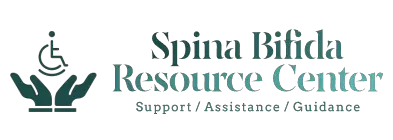Extensive Guide & FAQ on Sacral Myelomeningocele (Diagnosis, Treatment, Surgery)
(Article has been updated July 2, 2022)
This page contains the most popular questions people have about Sacral Myelomeningocele, diagnosis, treatment, and surgery. On this page, you can find the answers to the most popular questions asked online, including questions that have not been answered yet.
Sacral Myelomeningocele, also known as myelomeningocele at the sacral level, is a condition of spina bifida that can lead to bowel, bladder, motor, and sensory paralysis below the spinal lesion. Myelomeningocele (MMC) is the most severe form of SB and its complications can be a significant burden on people with SB.
What is sacral myelomeningocele?
Sacral Myelomeningocele is a severe form of spina bifida which is a neural tube defect. It is also considered to be one of the malformations of spina bifida aperta as the spinal cord and nerves are developed outside the body in a fluid-filled sac visible on the patient’s back.
This birth defect is in the form of a fluid-contained sac that protrudes at the affected vertebral level. The two most common regions of myelomeningocele are the lumbar and sacral areas located in the lower back. [1]
What causes sacral myelomeningocele?
Sacral Myelomeningocele is caused by a lack of folic acid, exposure to radiation, genetics, or exposure to viruses. The exact cause of sacral myelomeningocele is not known though studies show that a lack of folic acid in a woman of reproductive age or in a pregnant woman’s diet is a big contributing factor.
Studies show that the appropriate intake of folic acid can prevent sacral myelomeningocele from happening in future pregnancies. [2]
The neural plate is a structure made up of specialized type of cells. It develops in the embryo during early embryogenesis. The neural plate then folds around itself to form the neural tube. The upper end of the neural tube forms the brain and the lower part gives rise to spinal cord.
An abnormality in the neural tube results in neural tube defects. In case of it, the two sides of backbone do not fuse adequately, resulting in an abnormal opening in the backbone through which the spinal cord contents along with meninges are herniated out [5]. The exact cause of sacral myelomeningocele is still a mystery. Some scientists believe the following factors to be associated with development of myelomeningocele:
- Low folic acid level in pregnant women
- Exposure of women to certain drugs during pregnancy
- Exposure to radiation
- A history of spina bifida in a previous child
- Some type of viral infections
How do you diagnose sacral myelomeningocele?
- Serum AFP levels
- Quadruple or triple screen
- Ultrasonography
- Amniocentesis [11,12].
Tests done on the baby in the postnatal period to detect it may include x-rays, ultrasound, CT, or MRI of the spinal area [11].
Can a child with sacral myelomeningocele walk?
A child with Sacral Myelomeningocele can walk if their upper limbs function like normal and adequate spinal stability is present. To be able to walk, children with SB should also be able to raise their pelvis and have hip and trunk mobility.
For a baby born with myelomeningocele, early surgical intervention with close follow-up is required. There are cases where the myelomeningocele repair was done while the baby was still in the womb. After the surgery, the ability to walk for a baby with myelomeningocele depends on the neurological segments.
Children with myelomeningocele are advised to go to physical therapy to increase their possibility of walking. Physical therapy can help children with Spina Bifida with motor development and gait training. In some cases, orthopedic corrections play an important part to help the alignment of the lower limbs. [3]
What is the treatment for sacral myelomeningocele? (Children & adults)
The treatment for Sacral Myelomeningocele is surgery using appropriate microsurgical techniques for children. In most cases of this form of birth defect, studies show early surgical intervention with close follow-up has an important effect on the neurological condition of babies with myelomeningocele.
When the skin is not covered, the spinal cord and nerves remain exposed thus increasing the risk of infection. Due to this risky exposure of the spinal cord, surgery is recommended within the baby’s first few days of life.
For patients with sacral myelomeningocele, surgery is the only treatment option available to treat this malformation and preserve its neurological functions. There are other different techniques that have been used to treat this chronic condition but the clinical outcomes have reportedly not been as successful as the surgery treatment. [4]
Can you treat Sacral myelomeningocele with radiology?
You cannot treat Sacral Myelomeningocele with radiology as it is only a diagnostic imaging device that has the ability to take medical imagery of patients. Radiology is available in the form of x-ray, MRI, ultrasound, PET scan, and CT scan. None of these devices can treat any medical condition.
In cases of myelomeningocele, surgery has been proven to be the only way to repair the opening in the baby’s spine. The use of radiology is helpful to detect spina bifida in the womb and after the baby is born to properly diagnose the state of this birth defect. [5]
What surgery options are for sacral myelomeningocele? (Children & Adults)
The surgery options for Sacral Myelomeningocele are a variety of neurosurgical procedures. Children and adults with this form of SB can also go through orthopedic and urologic procedures. The surgical treatment includes closure of the defect, lower-extremity deformity correction, and spinal deformity reconstruction.
Without any of these surgical procedures, the defect will remain exposed which can highly jeopardize the patient’s life. Other than closing the defect, some patients with myelomeningocele may require neurological procedures like shunting for cases of hydrocephalus and urological procedures for cases of neurogenic bladder.
Research shows that prenatal surgeries are proven to be more effective than postnatal surgeries in preventing the occurrence of future complications. [6]
Video about Spina Bifida Fetal Surgery for Myelomeningocele
What are the symptoms or signs of sacral myelomeningocele?
The symptoms or signs of Sacral Myelomeningocele are a decreased ability to feel sensation just below the opening in the spine. Patients with sacral myelomeningocele can experience decrease leg movement. They can also experience the inability to control the bladder and bowels.
People with this form of SB can feel weakness, or loss of feeling or they may even have trouble moving body parts below where the myelomeningocele is located. They can also experience too much spinal fluid in the brain and may face problems with how the brain is formed. Patients with this type of chronic condition can face learning problems and seizures. [7]
How is it like living with sacral myelomeningocele in adults?
Living with Sacral Myelomeningocele in adults should not be a problem provided they have adequate medical support. Since this type of birth defect causes impairments in the patient’s body structure, functions, and cognitive disabilities, it can present an adverse effect on the patient’s life.
Due to improved medical care, people with sacral myelomeningocele can survive into adulthood and live life as normal as they possibly can by getting educated, obtaining gainful employment, living independently, being in relationships, and making a family. [8]
What are the complications of sacral myelomeningocele?
The complications of Sacral Myelomeningocele are dependent on the involved vertebral site. If diagnosed later or left untreated, this form of birth defect can lead to morbidity and can cause multiple disabilities.
Some of the complications of sacral myelomeningocele include babies developing meningitis which is an infection in the tissues surrounding the brain. Studies show that adults with this type of chronic condition have an increased mortality rate due to complications.
There are cases where other medical complications are developed as a result of pregnancy or delivery. The complications of women pregnant with myelomeningocele detected in babies include urinary tract and kidney infections. There can also be increased difficulty with mobility and continence. [9]
What is the difference between sacral myelomeningocele vs spina bifida?
The difference between Sacral Myelomeningocele vs Spina Bifida is myelomeningocele is the most serious type of Spina Bifida. This condition consists of a sac of fluid protruding from the baby’s back making its spinal cord and nerves exposed.
Compared to the other types of SB, sacral myelomeningocele can cause moderate to severe disabilities like bladder and bowel problems. A person with this form of SB can also experience loss of feeling in their legs or feet. There have been cases of sacral myelomeningocele where the patients find it extremely difficult to move their legs. [10]
Conclusion
These are the most popular questions on Sacral Myelomeningocele that have been recently asked online. If something is missing here or if you have any questions you may have about this form of SB, do not hesitate to contact us.
References
1. Myelomeningocele – Seattle Children’s. Seattle Children’s Hospital. (n.d.). Retrieved June 29, 2022, from https://www.seattlechildrens.org/conditions/myelomeningocele/
2. What is myelomeningocele? causes, diagnosis, treatment. Washington University Orthopedics. (n.d.). Retrieved June 29, 2022, from https://www.ortho.wustl.edu/content/Patient-Care/6885/Services/Pediatric-and-Adolescent-Orthopedic-Surgery/Overview/Pediatric-Spine-Patient-Education-Overview/Myelomeningocele.aspx
3. Fujisawa, D. S., Gois, M. L., Dias, J. M., Alves, E. de, Tavares, M. de, & Cardoso, J. R. (2011). Intervening factors in the walking of children presenting myelomeningocele. Fisioterapia Em Movimento, 24(2), 275–283. https://doi.org/10.1590/s0103-51502011000200009
4. Kural, C., Solmaz, I., Tehli, O., Temiz, C., Kutlay, M., Daneyemez, M. K., & Izci, Y. (2015, October). Evaluation and management of Lumbosacral myelomeningoceles in children. The Eurasian journal of medicine. Retrieved June 30, 2022, from https://www.ncbi.nlm.nih.gov/pmc/articles/PMC4659518/
5. I. Osman, MBBS, H., & Badreldeen, MD, MS, M. (2021). What is radiology? A look into the history, advancement and modern applications of the specialty. International Journal of Research Publications, 90(1). https://doi.org/10.47119/ijrp1009011220212554
6. Jeffrey D Thomson, M. D. (2021, October 16). Surgery for spina bifida: Background, anatomy and neurologic involvement, assessment for surgery. Surgery for Spina Bifida: Background, Anatomy and Neurologic Involvement, Assessment for Surgery. Retrieved June 30, 2022, from https://emedicine.medscape.com/article/2040493-overview
7. U.S. Department of Health and Human Services. (n.d.). Myelomeningocele – about the disease. Genetic and Rare Diseases Information Center. Retrieved June 30, 2022, from https://rarediseases.info.nih.gov/diseases/3475/myelomeningocele
8. Cope, H., McMahon, K., Heise, E., Eubanks, S., Garrett, M., Gregory, S., & Ashley-Koch, A. (2013, July). Outcome and life satisfaction of adults with myelomeningocele. Disability and health journal. Retrieved June 30, 2022, from https://www.ncbi.nlm.nih.gov/pmc/articles/PMC3687213/
9. Alruwaili AA, M Das J. Myelomeningocele. [Updated 2022 May 8]. In: StatPearls [Internet]. Treasure Island (FL): StatPearls Publishing; 2022 Jan-. Available from: https://www.ncbi.nlm.nih.gov/books/NBK546696/
10. What is Spina Bifida? | CDC. (n.d.). Retrieved June 29, 2022, from https://www.cdc.gov/ncbddd/spinabifida/facts.html
11. Greene ND, Coppa AJ. Development of the vertebrate central nervous system: formation of the neural tube. Prenat Diagn 2009;29(4):303-11.
12. Birnbacher R, Messerschmidt AM, Pollak AP. Diagnosis and prevention of neural tube defects. Curr Opin Urol 2002;12(6):461-4.
13. meningocele vs myelomeningocele
Old References from old article
- Copp AJ, Stanier P, Greene ND. Neural tube defects: recent advances, unsolved questions, and controversies. Lancet Neurol 2013;12(8):799-810.
- Myelomeningocele [Internet]. [Last updated 15 Mar 2004; Cited on 30 Oct 2013]. Available from: http://www.ncbi.nlm.nih.gov/pubmedhealth/PMH0002525/.
- Persad VL,Hof M, Dube JM,Zimmer P. Incidence of open neural tube defects in Nova Scotia after folic acid fortification. CMAJ 2002; 167(3): 241–5.
- Ahrens K, Yazdy MM, Mitchell AA, Wereler MM. Folic acid intake and spina bifida in the era of dietary folic acid fortification. Epidemiology 2011;22(5):731-7.
- Greene ND, Coppa AJ. Development of the vertebrate central nervous system: formation of the neural tube. Prenat Diagn 2009;29(4):303-11.
- Saboval L,Horn F, Drdulova T, et al.[Clinical condition of patients with neural tube defects]. Rozhl Chir 2010;89(8):471-7.
- Birnbacher R, Messerschmidt AM, Pollak AP. Diagnosis and prevention of neural tube defects. Curr Opin Urol 2002;12(6):461-4.
- Deprest JA, Devlieger R, Srisupundit K, et al. Fetal surgery is a clinical reality. Semen Fetal Neonatal Med 2010;15(1):58-67.
- Bui TH, Deprest JA, Ville Y, Westgren M. Minimally invasive techniques make fetal surgery possible. Disabling abnormalities can be corrected. Lakartidningen 1998;95(44):4848-50,4853-4.


